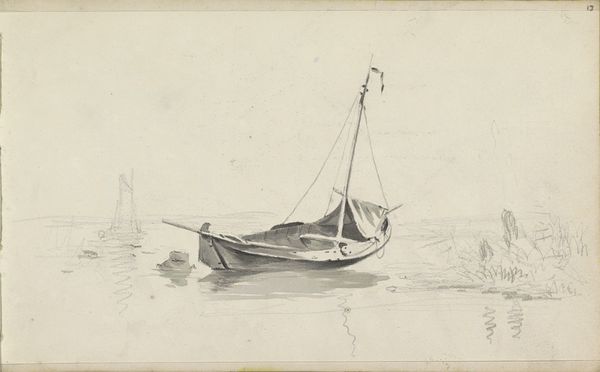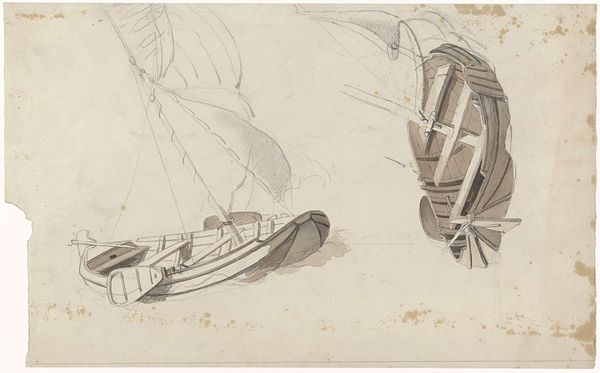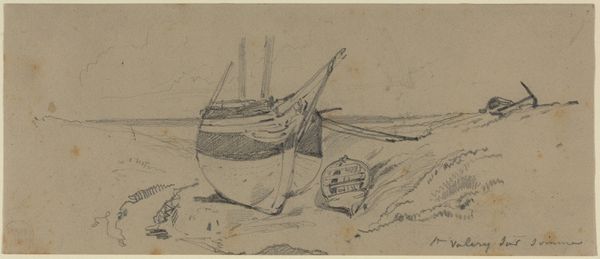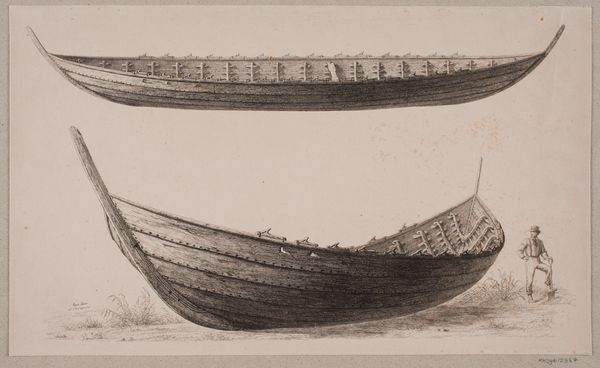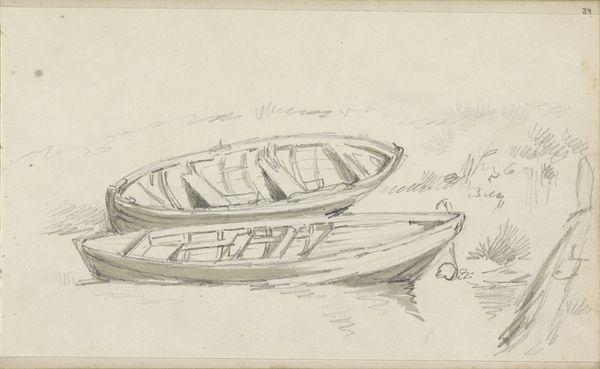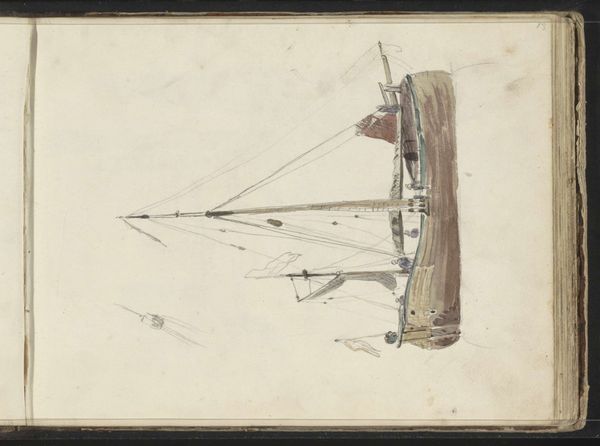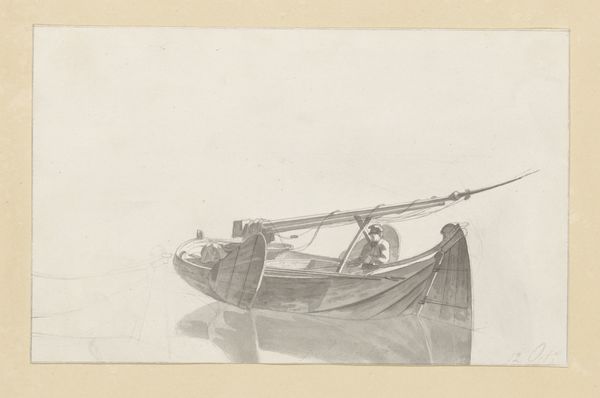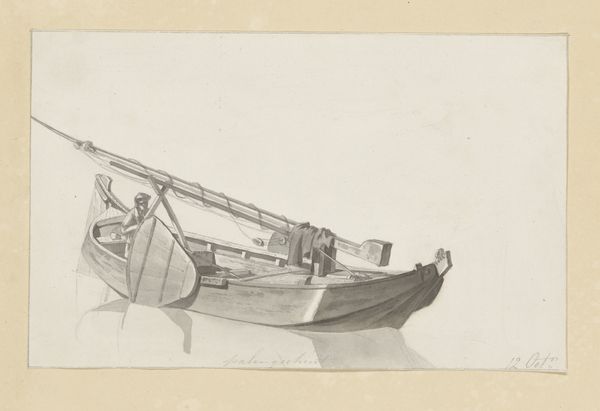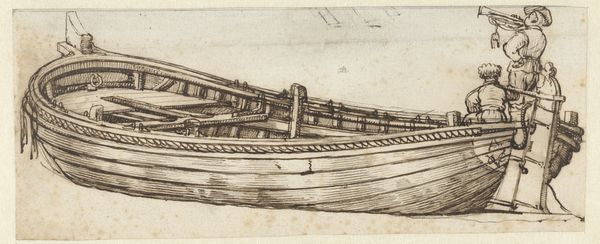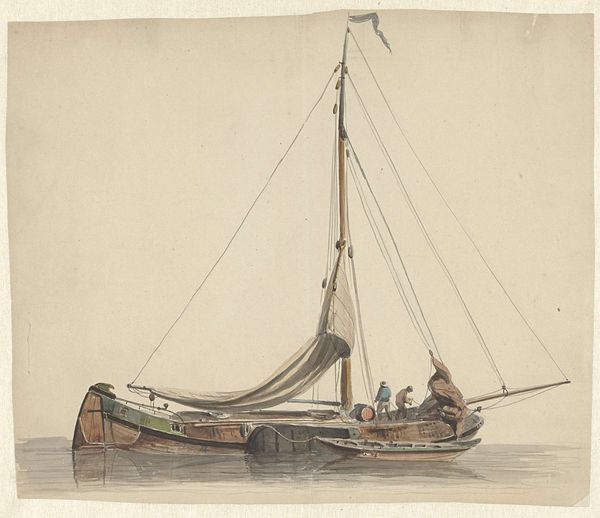
drawing, print, ink
#
drawing
# print
#
asian-art
#
ink
Dimensions: 9 3/16 × 11 1/2 in. (23.4 × 29.2 cm) (image, sheet, uchiwa-e)
Copyright: Public Domain
Curator: This understated work is titled "Collecting Green Rust," made by Yamada Hogiyoku, a Japanese artist who was working around the 1830s. The medium is listed as ink on paper—drawing and print—and it resides in the collection of the Minneapolis Institute of Art. What are your initial impressions? Editor: Bleak, spare. The tonal range is limited; there is minimal color. What could be considered an Asian aesthetic with such focus on line and its stark expression, yet a seemingly European focus on a detailed depiction of shape, or form. Curator: These elements reflect a complex era in Japanese history. While Japan officially maintained a policy of isolation, limited trade, mostly via Nagasaki, fostered contact with European art and science. "Rangaku," or "Dutch Learning," enabled a small group of Japanese scholars to study Western anatomy and perspective. Hogyoku here blends printmaking techniques with observation. He’s attempting to depict light and shadow according to newly imported artistic systems, thus creating an utterly individualistic approach. Editor: The shadows certainly feel less stylized than we might expect from traditional Japanese printmaking. However, despite this adoption of Western techniques, I notice the boats and their precise depiction create strong angular compositions, contrasting with their rather quiet and desolate context and lending a somber aesthetic throughout. I’m reminded of an aesthetic focus on balance which pervades the work, whether the boats depicted are parallel or asymmetrical. The artist very acutely creates depth by these elements that focus the viewer's sight to the front of the piece. Curator: Yes, there's this wonderful tension between observation and what became something else under isolationist social pressures in Edo Japan. These were the early stages of a very controlled period of cross-cultural exchange that deeply affected artistic circles. We see Western techniques being absorbed and creatively reinterpreted within the broader context of Japanese tradition. Editor: For me, this work stands as a wonderful testament to how, if you like, a single, isolated perspective could bring forth so many considerations when looking at line, shape and depth. Curator: And, crucially, an artistic era is showcased by looking at Japan opening itself to artistic cross-pollination through "Dutch learning".
Comments
No comments
Be the first to comment and join the conversation on the ultimate creative platform.
